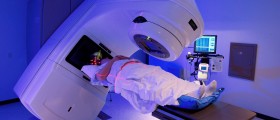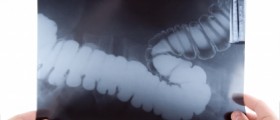
Cervical cancer is a malignant tissue on cervical area. In its early stages this type of cancer has no symptoms whatsoever. Later in its development, symptoms may include vaginal bleeding or discharge and pain during sexual intercourse. Other symptoms incčude loss of appetite, weight loss, vaginal bleeding, leaking of urin or feces from the vagina, back pain, fatigue, bone fractures. One of the causes is the infection with a human papillomavirus which causes changes in the cells of the cervix. Besides this,some scientist claim that risk factors include smoking, HIV infection, chlamydia, hormonal contraception, multiple pregnancies, hereditary factor. Cervical cancer has several stages, from stage 0 to stage IVB. It is considered advanced when in stage IIB and above.
Prevention
One way of preventing this type of cancer from developing is by vaccine against human papillomavirus, by using condoms, avoiding smoking and by proper diet. Women should consume more fruit and vegetables, vitamins, folic acid, and carotenoids. It is also important to do regular screenings and to be fully aware of the disease. In the United States mortality due to the cervical cancer is half those in the rest of the world. It is believed that this success is due to regular screening.
Treatment
There are three kinds of treatment, surgery or hysterectomy, radiation therapy and chemotherapy, but none of them offers complete healing nor guarantees the cancer will not come back. What method of treatment will be used depends on the stage of the cervical cancer. Stage I cervical cancer is usually removed by hysterectomy, which is removal of the whole uterus and a part of the vagina. Some early stage tumors not big in size can be treated with radiation therapy, while advanced stage tumors are usually treated with it. The method of treatment usually depends on whether the patient has already had radiotherapy or chemotherapy. In case of the recurrent cervical cancer, if detected at its early stage, can be treated successfully with chemotherapy, radiation therapy or radical surgery, or combination of the three, depending on the doctor\'s evaluation. Sometimes the cancer spreads in the body to nearby lymph nodes. If the cancer did not spread too far, it is possible to remove it by surgery. All of this can be seen on CT scan. Sometimes it is necessary to combine chemotherapy with radiation therapy, perhaps even with surgery. The two kinds of therapies are a good choice for many kinds of cervical cancers. Of course, they give best results in early stages of cancer, but they decrease the risk of recurring cancer. They have more side-effects but their effect is weaker and lasts shorter.

















Your thoughts on this
Loading...